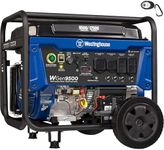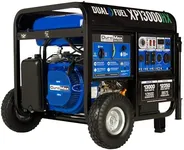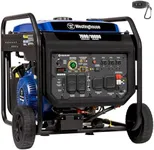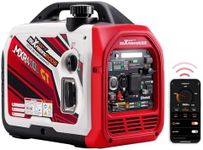Buying Guide for the Best Portable Electric Generator
Choosing the right portable electric generator involves understanding your power needs and the specific features that will best suit your situation. Portable generators are useful for providing backup power during outages, powering tools on job sites, or even for recreational activities like camping. To make an informed decision, you need to consider several key specifications that will determine the generator's performance and suitability for your needs.Power Output (Wattage)Power output, measured in watts, indicates how much electricity the generator can produce. This is crucial because it determines what and how many devices you can run simultaneously. Generators typically range from 1,000 watts to over 10,000 watts. For small appliances and electronics, a generator with 1,000 to 3,000 watts is usually sufficient. For larger appliances or multiple devices, you may need 3,000 to 7,000 watts. For whole-house backup, look for generators with 7,000 watts or more. Assess your power needs by listing the devices you plan to power and their wattage requirements.
Fuel TypePortable generators can run on various types of fuel, including gasoline, propane, and diesel. Gasoline is the most common and widely available, but it has a shorter shelf life and can be harder to store. Propane burns cleaner and has a longer shelf life, but requires a separate tank. Diesel generators are more fuel-efficient and durable, but they are typically more expensive and noisier. Choose the fuel type based on availability, storage convenience, and your preference for maintenance and environmental impact.
Run TimeRun time refers to how long the generator can operate on a full tank of fuel. This is important for determining how often you will need to refuel, especially during extended power outages. Generators with larger fuel tanks generally have longer run times. For occasional use or short outages, a generator with a run time of 5-8 hours may be sufficient. For longer outages or continuous use, look for models with run times of 10-12 hours or more. Consider your typical usage scenarios to determine the appropriate run time.
PortabilityPortability is determined by the generator's weight, size, and design features like wheels and handles. If you need to move the generator frequently, such as for camping or job sites, look for lightweight models with built-in wheels and handles. For home backup use where the generator will stay in one place, portability may be less critical. Assess how and where you plan to use the generator to decide on the level of portability you need.
Noise LevelNoise level, measured in decibels (dB), indicates how loud the generator will be during operation. This is important for comfort and compliance with local noise regulations. Generators typically range from 50 dB (quiet) to over 80 dB (loud). For camping or residential areas, a quieter generator (50-60 dB) is preferable. For job sites or remote locations, noise may be less of a concern. Consider where you will use the generator and how important noise level is to you.
Start TypeGenerators can have different start types, including manual recoil start, electric start, and remote start. Manual recoil start requires pulling a cord, which can be physically demanding. Electric start uses a push button or key, making it easier to operate. Remote start allows you to start the generator from a distance using a remote control. Choose the start type based on your preference for convenience and ease of use. Electric and remote starts are generally more user-friendly, especially for those who may have difficulty with manual recoil.
Outlets and ConnectivityThe number and type of outlets determine what devices you can connect to the generator. Common outlets include standard 120V household outlets, 240V outlets for larger appliances, and USB ports for charging electronics. Some generators also offer connectivity features like Bluetooth or Wi-Fi for remote monitoring and control. Consider the types of devices you need to power and ensure the generator has the appropriate outlets. Additional connectivity features can add convenience but may not be necessary for everyone.















![[Upgraded Version] ALLPOWERS S2000 Portable Power Station 2000W (Peak 4000W) MPPT Solar Generator 1500Wh Backup Battery with 4 AC Outlets for Outdoor Camping RV Emergency Off-Grid](https://images-proxy.bestreviews.guide/RKciUpoEpXP6FG5NDwMBUKV-gKk=/0x150/https://m.media-amazon.com/images/I/51n9OTptdIL._AC_CX679_.jpg)




